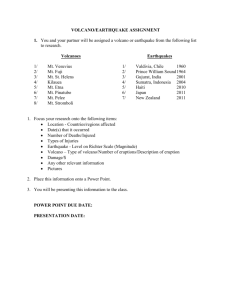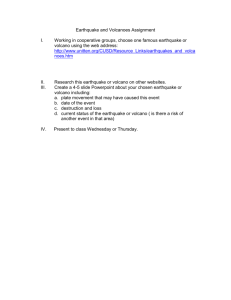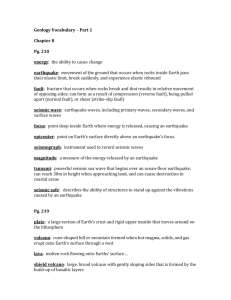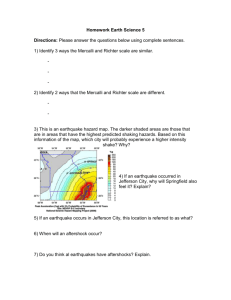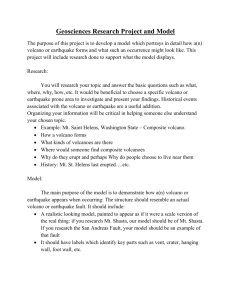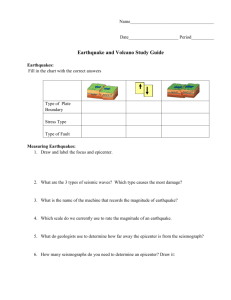seismic wave
advertisement
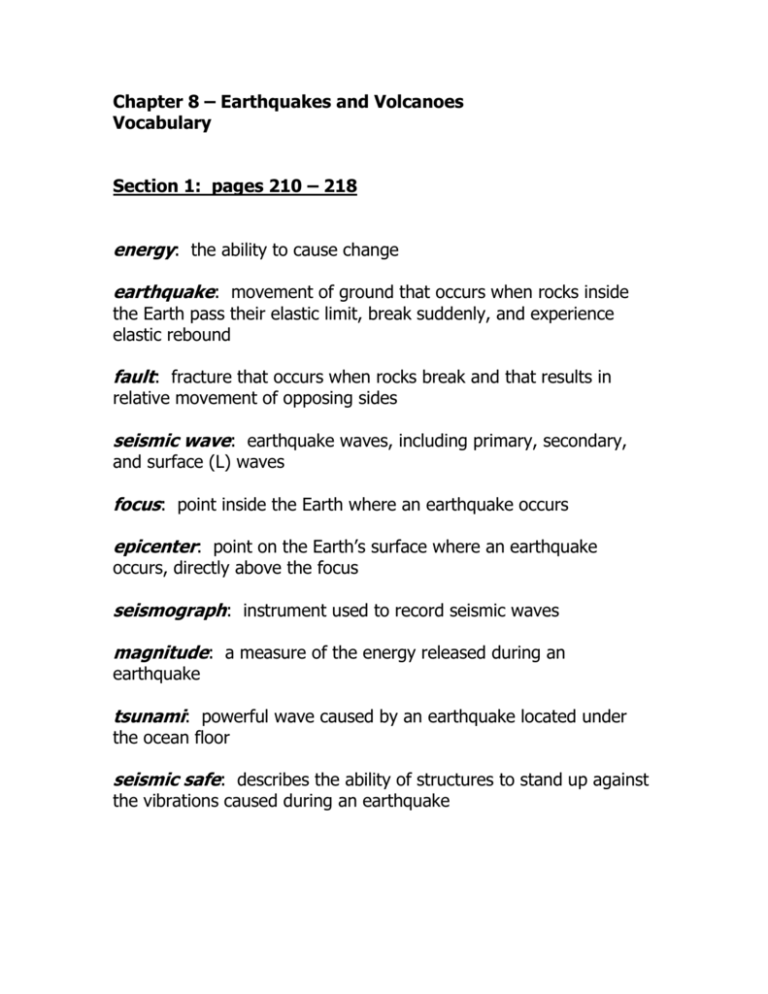
Chapter 8 – Earthquakes and Volcanoes Vocabulary Section 1: pages 210 – 218 energy: the ability to cause change earthquake: movement of ground that occurs when rocks inside the Earth pass their elastic limit, break suddenly, and experience elastic rebound fault: fracture that occurs when rocks break and that results in relative movement of opposing sides seismic wave: earthquake waves, including primary, secondary, and surface (L) waves focus: point inside the Earth where an earthquake occurs epicenter: point on the Earth’s surface where an earthquake occurs, directly above the focus seismograph: instrument used to record seismic waves magnitude: a measure of the energy released during an earthquake tsunami: powerful wave caused by an earthquake located under the ocean floor seismic safe: describes the ability of structures to stand up against the vibrations caused during an earthquake Section 2: pages 219 -224 plate: a large section of Earth’s crust and rigid upper mantle that moves around on the asthenosphere volcano: cone-shaped hill or mountain formed when hot magma, solids, and gas erupt on to the Earth’s surface lava: molten rock on the Earth’s surface shield volcano: large, broad volcano with gently sloping sides that is formed by quiet eruptions cinder cone volcano: relatively small volcano formed by moderate to explosive eruptions composite volcano: steep-sided volcano formed from alternating layers of violent eruptions and quieter eruptions Section 3: pages 226 - 231 asthenosphere: plastic-like layer of mantle under the lithosphere rift: long, crack, fissure, or trough that forms between tectonic plates moving apart at plate boundaries hot spot: hot, molten rock forced upward from deep inside the Earth which may cause magma to break through the Earth’s surface and cause volcanoes; usually occurs in the middle of a plate
